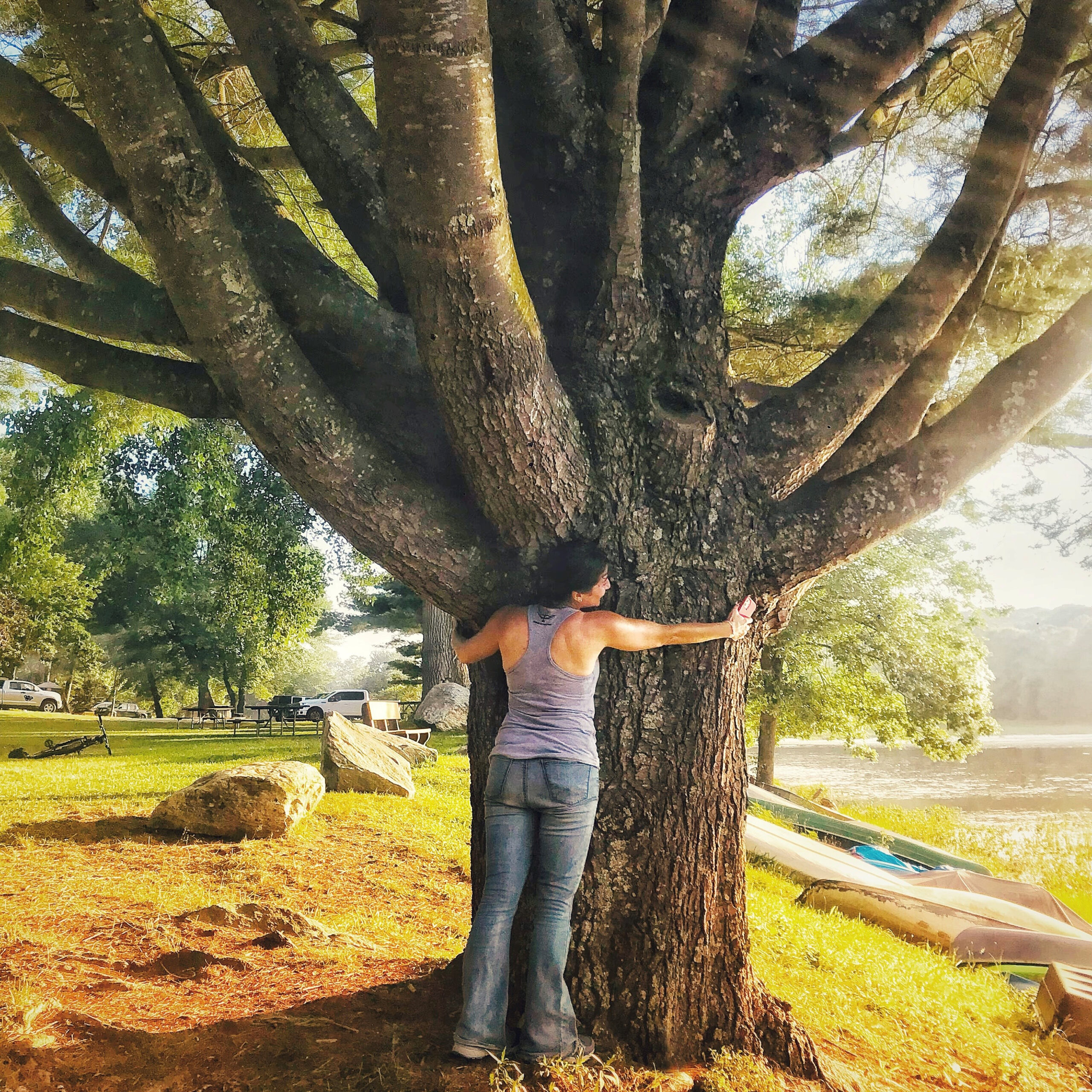By Nicole Rivard
Even though Americans have been celebrating Arbor Day since 1872—a day to plant,
nurture and celebrate trees—the term “tree hugger” is still sometimes used
disparagingly.
I wear it like a badge of honor. I often share with people how I actually hug a tree almost
daily when I’m walking my bulldog Lila in the land trust property near my apartment.
Why? As a thank you for absorbing carbon dioxide, preventing erosion, and providing
oxygen and shade. Not to mention trees are an essential part of the ecosystem for
insects, birds and other wildlife. But also, it just makes me feel less anxious and more
replenished.
We’re in a climate crisis, so what should be disparaged is not advocating for leaving
trees standing and the protection of woodlands. We cannot plant our way out of a
climate crisis.
While Friends of Animals’ work spans the globe, a couple of years ago, it hit close to
home, literally outside our Darien, Connecticut, headquarters. A crew from the Public
Works Department began removing the first of four healthy trees abutting sidewalks
around our office—a plan put in place because someone sued the town after tripping on
a nearby sidewalk. We stood in front of the second tree—a 100-year-old sycamore,
forcing the crew to leave until town officials could hear our reasons for opposing the
dreadful plan. We thought to ourselves, if communities start cutting down healthy trees
because of a philosophy of “someone might trip” this planet is doomed. What about the
public safety issue of the climate crisis and the negative environmental impact of cutting
down healthy legacy trees?
Unfortunately, the town eventually dismembered the sycamore. However, just yesterday
while on a walk with FoA president Priscilla Feral, we stopped, admired and patted the
bark of a stately old oak that remains standing outside our office building today because
of FoA’s pushback.
As Margaret Renkl pointed out in her recent New York Times column, we should all be
laser-focused on saving our urban trees. She writes that too few of us understand the
crucial contribution that trees make to our cities and suburbs: cooling hot buildings,
preventing storm-water runoff, improving air quality, and the like. Plus they provide food,
shelter and nesting for our wild neighbors.
Over 141 million acres of America’s forests are located right in our cities and towns,
according to the U.S. Department of Agriculture.
Of course, we support the planting of the right trees correctly—i.e., choosing native
trees, a diverse mix of species, making sure there’s enough room for roots and
providing adequate water. But the older trees are, the better. It takes at least 100 years
for a broad-leaf tree or about 60 years for a conifer to reach maturity.
In one year, an acre of mature trees absorbs the amount of CO2 produced by a car
driven 26,000 miles, according to the Arbor Day Foundation. And in that same amount
of time, a mature tree will absorb more than 48 pounds of carbon dioxide from the
atmosphere and release oxygen in exchange.
“Newly planted saplings can help, but with nowhere near the same effectiveness as
mature trees. And yet we have somehow gotten the idea that planting a tree in urban
and suburban areas has the same practical effect and moral force — there, I said it —
as preserving one,” Renkl writes. “A tree is a tree, right? If one happens to be growing in
a place where you don’t want it to grow, just cut it down and plant another in a more
convenient spot. As a species, we don’t have 150 years to wait for a black walnut
seedling to reach its full glorious height before we start protecting the black walnut trees
still among us.”
She’s absolutely right.
And speaking of glorious trees, not that long ago my friend Chris took me to see a
majestic white oak tree in Bedford, New York. It is estimated to be more than 500 years
old; it’s girth is more than 30 feet and the spread of its branches is 130 feet from tip to
tip. From the days when Bedford was Native American Territory, through the
Revolutionary War and to the present, this noble tree has seen much history.
I dug into its history a bit more and found this: In 1942 Harold Whitman deeded the
ground on which the tree stands to the Town of Bedford, in memory of his wife, Georgia.
Said Mr. Whitman, “My father taught me to take off my hat whenever I passed what he
used to call ‘our most venerable citizen.’ I do it to this day, as does my son, and I
commend it to you. Long may the old oak’s proud crest stand in Bedford, a challenge to
stability and generosity, so that its qualities may be found always in the character of
Bedford citizens.”
We could have sat underneath the protective branches of that venerable oak all day. But
low and behold, a man approached us carrying a box with an engagement ring in it. He
was about propose to his girlfriend underneath the oak—the tree was that special to
them.
As we left, I thought, hurray for fellow tree huggers.
Now if only all people would embrace trees, and nature, with open arms every day, not just on
Arbor Day.
photo caption: Friends of Animals staffer Nicole Rivard stops to hug a tree while camping in Connecticut

